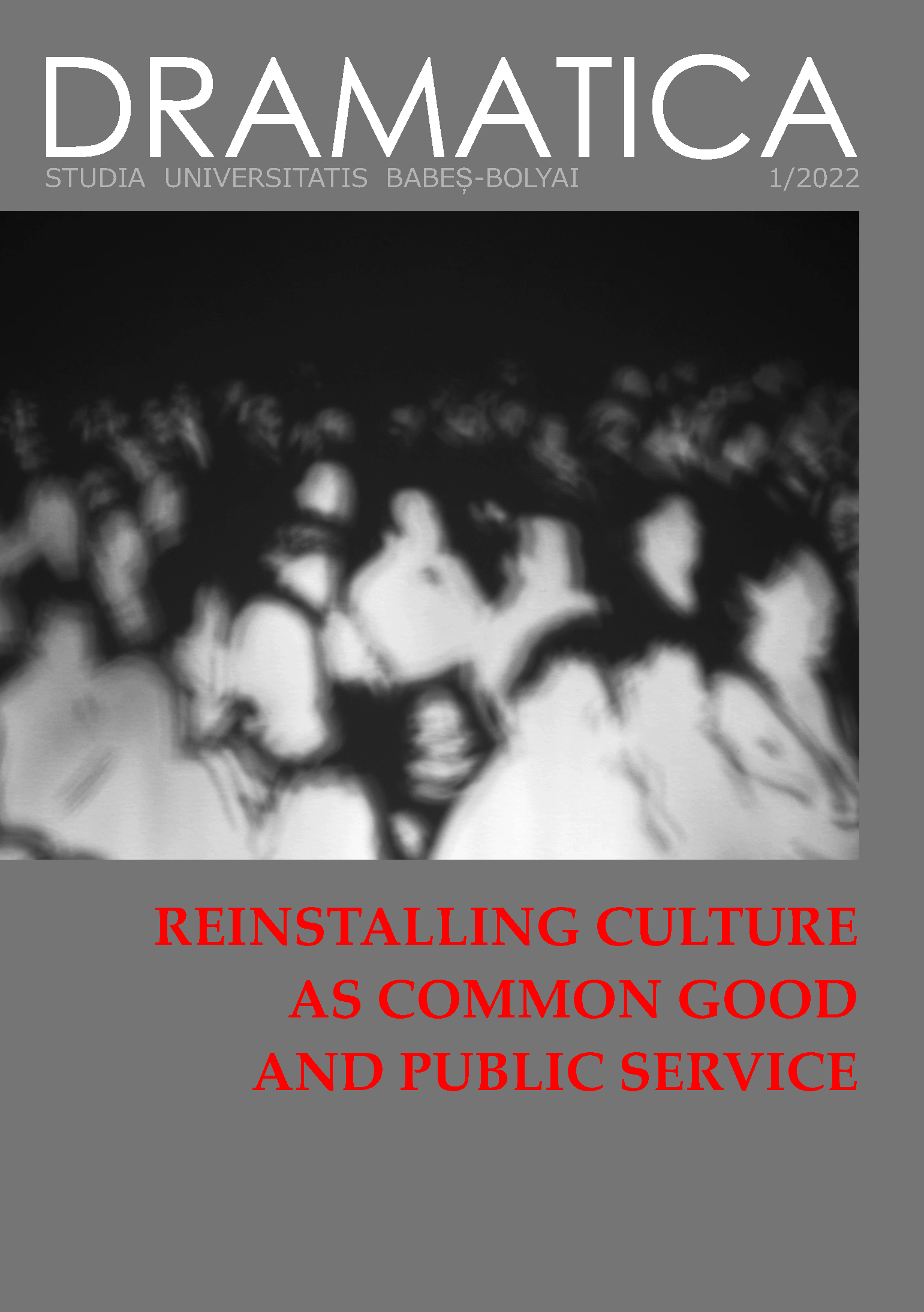How Do Cultural Houses and Cultural Hearths Matter? Towards a New Imagination of These Institutions
DOI:
https://doi.org/10.24193/subbdrama.2022.1.02Keywords:
cultural houses, architecture, social imagination, monetization of culture, entanglementAbstract
Whether resembling vacated shells or remaining fully functional, either commercially repurposed or relatively busy with paid or unpaid ‘leisure activities’, cultural houses and cultural hearths are still present throughout Romania, usually in the centre of towns and communes. Designed to centralise cultural and informal educational activities within a socio-geographic area, they enabled regional authorities to both survey the leisure time of the population along with providing a foundation for the production of the ‘new’ multidimensional socialist subject within a collective context. But immediately after 1990 they were seen as either a nuisance or a historic reminder that needed to be turned into an absence, a void: the epic but invisible institution. The article makes a case for why they deserve another chance in a punctual and specific re-evaluation that ultimately desires to insert a number of critical points for a possible re-imagination of these models of organization in which both stable and transitory communities collectively produce what we may call culture. It provides an extended timeline/lineage that opposes one-dimensional readings of the institutions as objects of communist propaganda. It argues that the ways in which they were planned during 1955-1989 counteracts contemporary monetarist visions towards the role of such cultural institutions. Ultimately, cultural houses were part of a national plan that considered culture as central to the ‘common good’ rather than a laissez-faire approach that places economic efficiency above all else. Paradoxically, more contemporary versions of cultural houses and hearths are often far more restrictive than their early predecessors and this situation can and should change.References
“Ancheta revistei. Zece întrebări cu privire la casele de cultură” [Magazine Survey: 10 Questions Related to Cultural Houses], Architecture, no. 2, 1974.
Barad, Karen. Meeting the Universe Halfway: Quantum Physics and the Entanglement of Matter and Meaning. Durham: Duke University Press, 2007.
“Cuvântarea M.S. Regelui la redeschiderea Fundației”. Căminul Cultural, no. 1, November 1934: 2.
Gusti, Dimitrie, “Idei călăuzitoare pentru munca culturală la sate”. Căminul Cultural, no. 1, November 1934: 3-5.
Ghițulescu, Georgeta and Radu Gherghel. Manualul Arhitectului Proiectant [Manual of Designing Architect]. Bucharest: Editura Tehnica,1956.
Graves, James Brau. Cultural Democracy, The Arts, Community and the Public Purpose, Chicago: University of Illinois Press, 2005.
Massof, Ioan. “Theatre in the Workers Club.” Theatre, nr. 4, April 1971: 8.
Mușat, Raluca. “Cultural Politics in the Heart of the Village: The Institutionalisation of the Camin Cultural in Interwar Romania.” New Europe College Ștefan Odobleja Program Yearbook 2012-2013 (2013): 149-180. http://212.146.115.237/data/pdfs/publications/odobleja/2012-2013/RALUCA_MUSAT.pdf
Oproiu, Ecaterina. 3x8 plus infinit Dialoguri despre condiția femeii. Bucharest: Editura Eminescu, 1975.
Popescu-Puțuri, Ion and Augustin Deac. Documentele miscarii muncitoresti din Romania [Documents of the Workers Movement in Romania], Bucharest: Editura Politică, 1977-78.
Stahl, H. Henri. Memorii si Amintiri [Memories and Thoughts], Bucharest: Editura Minerva, 1981.
Tia Șerbănescu. “Casele de Cultura” [Cultural Houses File]. Tribuna României, 15 January, 1977: 8-10.
Tismăneanu, Vladimir. Comisia prezidențială pentru analiza dictaturii comuniste din România. Raport final [Final Report of the Presidential Committee for Analysing the Romanian Communist Dictatorship], Bucharest: Humanitas, 2006.
Tulbure, Irina. The Factory of Facts and other (Unspoken) Stories. Bucharest: Asociația Pepluspatru, 2017.
Downloads
Published
How to Cite
Issue
Section
License
Copyright (c) 2022 Studia Universitatis Babeș-Bolyai Dramatica

This work is licensed under a Creative Commons Attribution-NonCommercial-NoDerivatives 4.0 International License.


